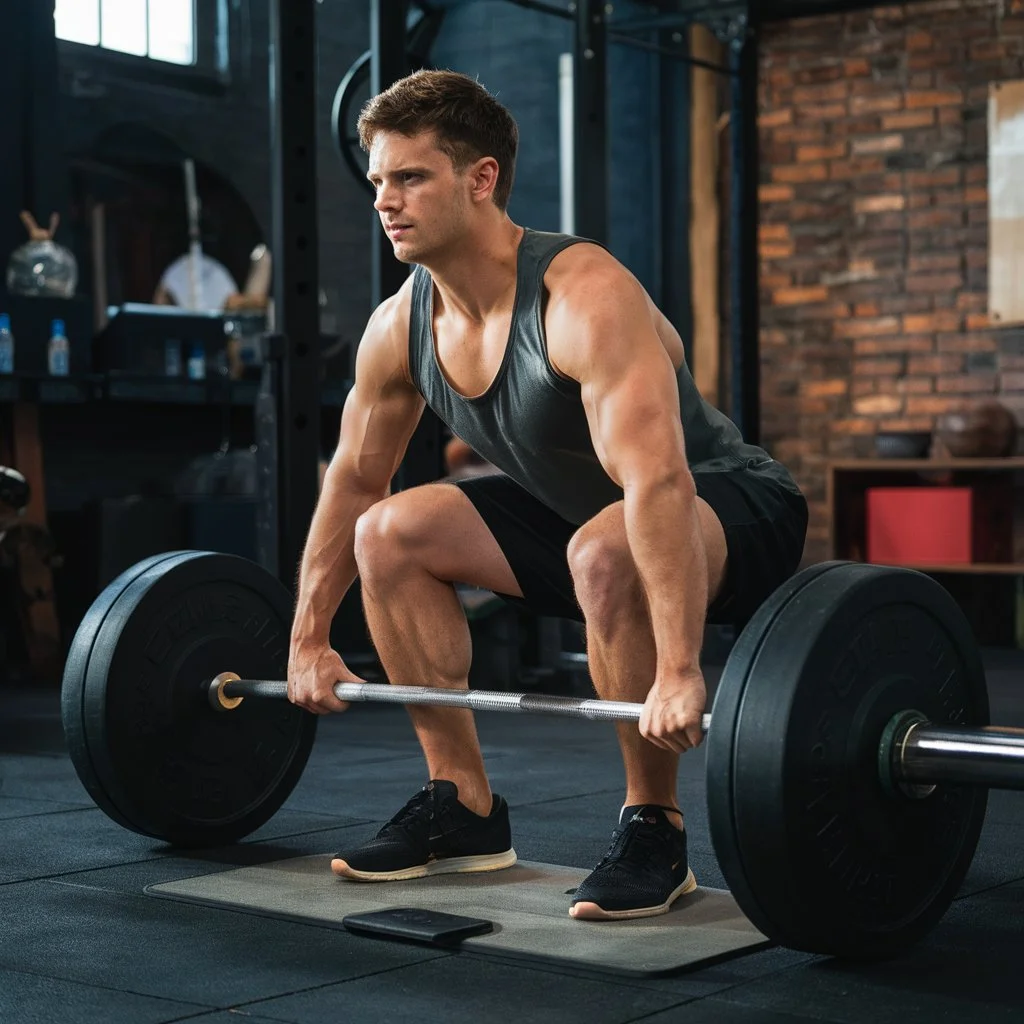Introduction
A barbell pad is a piece of equipment used in weightlifting and strength training. It provides cushioning and support when lifting heavy weights. This is especially important during exercises like squats, lunges, and hip thrusts. It’s usually made of dense foam or rubber. It’s designed to wrap around the barbell’s center. It protects your neck, shoulders, and hips. The barbell shields them from discomfort or bruising caused by pressure.
The pad helps spread the weight across your body. This lets you focus on form and technique without the distraction of discomfort. It’s a valuable accessory. It’s for anyone who wants to maximize their performance. They want to do so with comfort while lifting weights. Barbell pads are key accessories in weightlifting. They give comfort and protection. You need these during heavy lifting exercises like squats, hip thrusts, and lunges. They are crucial. They cushion the shoulders and neck from the pressure of the barbell. This reduces discomfort and prevents bruising or injury.
Material
High-density foam and rubber are great for barbell pads. They last and support. The foam is high-density. It ensures that it can hold the weight of the barbell without compressing too much. It gives enough cushioning for your shoulders or neck. This is for exercises like squats or hip thrusts. Barbell pads are usually made from dense foam. It can support the weight of the barbell without compressing much. This ensures it gives enough cushioning for your shoulders or neck. It does so during exercises like squats or hip thrusts.
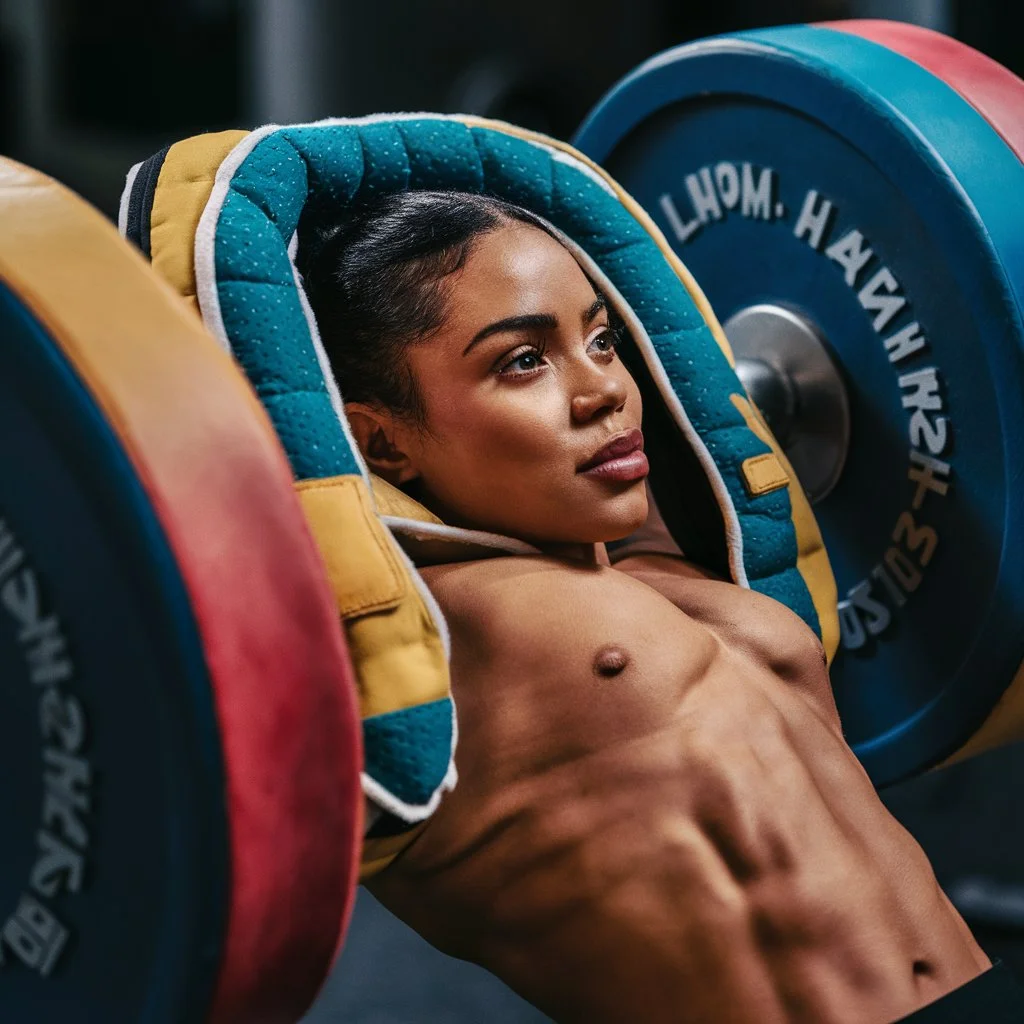
The foam is tough and bouncy. It helps to spread the weight and prevent discomfort or injury during heavy lifting. Also, the foam is usually covered with tough, easy-to-clean material. This material, such as vinyl or nylon, makes the foam last longer and makes it easier to maintain.
Additionally, a non-slip surface is a fantastic feature to look for in a barbell pad. It keeps the pad in place during your workouts. This stops any sliding or shifting. Those could cause discomfort or instability.
Thickness
Choosing the right thickness for your barbell pad is key. It is crucial for comfort and safety during your workouts. Here’s a summary to help in your decision: These pads are 1-inch thick. They are thinner and provide basic cushioning. They are for people who like a firmer feel. Or, for those who don’t need much padding due to their lifting technique or comfort. But, they may not offer enough protection. This is true for heavy lifting or long workouts.
- 2-inch Thickness: This is the most common thickness for barbell pads. They provide a good balance between cushioning and stability. This makes them suitable for many exercises and lifters. They offer good protection against pressure and discomfort. This is true even during intense workouts with heavy weights. Barbell pads are a great addition to your workout gear. This is particularly valid when using large weights. They provide cushioning and support. This helps ease pressure and discomfort. They are very helpful for your shoulders and neck. This is true during exercises like squats and hip thrusts. This added comfort can help you focus better on your form and strength. It leads to better performance and less risk of injury.
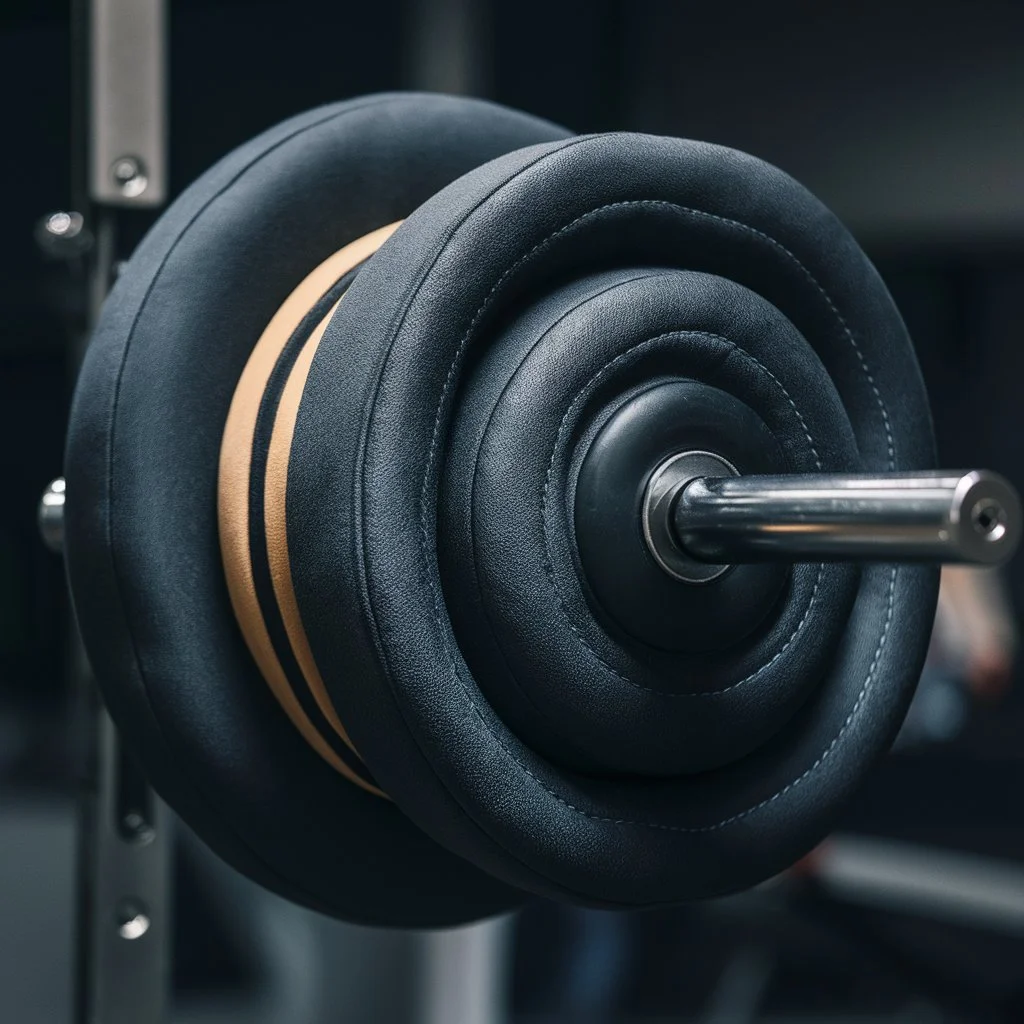
- 3-inch Thickness: Thicker pads like these offer most cushioning and protection. They are great for people who lift very heavy weights. They are also for people with sensitive pressure points. Barbell pads are helpful. They protect sensitive pressure points and add comfort. This is especially true when lifting heavy weights. They cushion the barbell from your body. This reduces discomfort and bruising from the bar pressing on your neck or shoulders. It happens during exercises like squats, lunges, or hip thrusts. For people lifting very heavy weights, these shoes can help prevent pain and injury. They can reduce discomfort a lot. This is especially true during exercises that put a lot of pressure on the shoulders, neck, or hips.
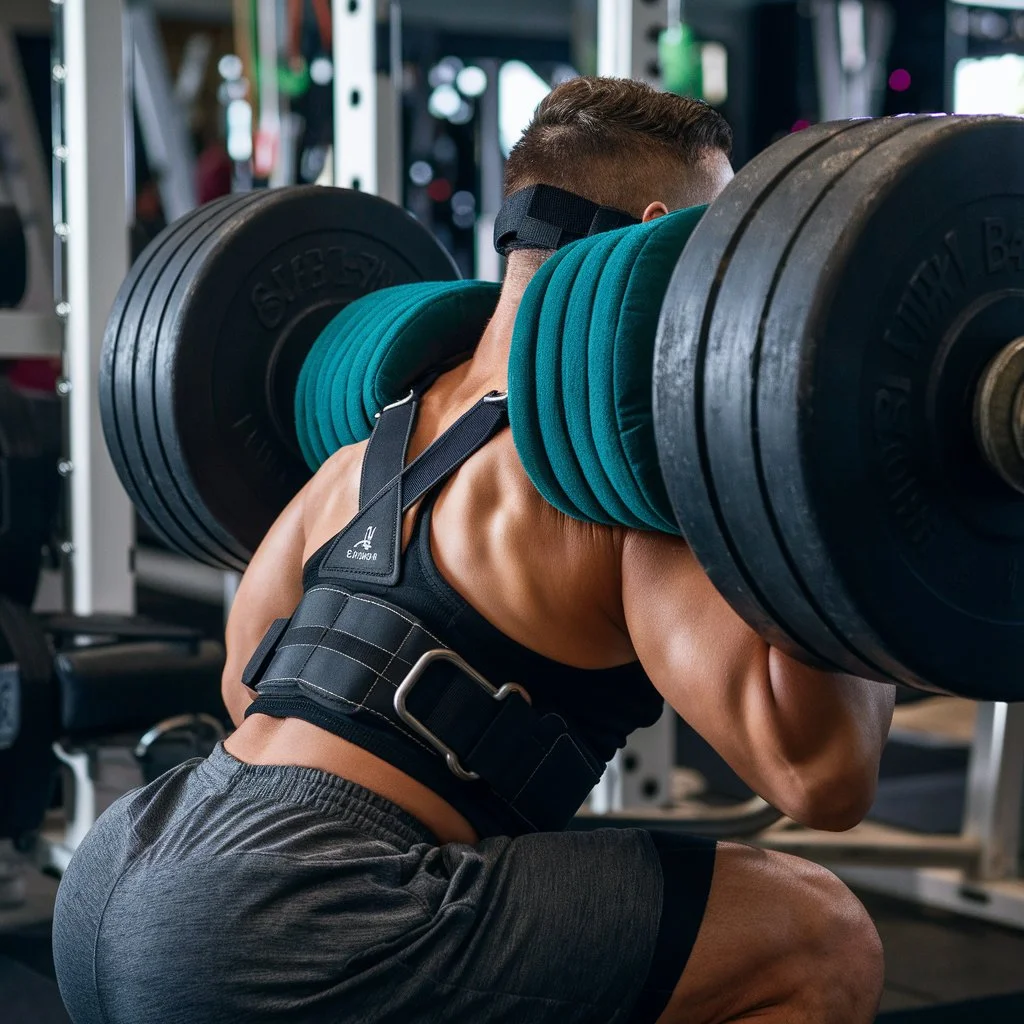
Durability
When looking for a durable barbell pad, rank tough, resilient materials. Neoprene, high-density foam, and heavy-duty rubber are excellent options. These materials resist tearing. Even after extensive use, they maintain their shape well. Barbell pads are often made from materials like high-density foam or rubber. We choose these materials for their toughness. They resist tears and keep their shape under heavy loads and frequent use. High-density foam is popular. It cushions the shoulders during squats or hip thrusts. It also keeps its shape over time. Rubber variants offer similar benefits.
They also have added grip to prevent slipping during exercises. In the end, the choice of material depends on factors. These include personal preference, budget, and workout needs. Additionally, look for features like reinforced stitching or double-layered construction for added durability. Remember to check customer reviews. They give insights into how well the thing lasts before you buy. That’s a solid suggestion! Customer reviews often offer valuable insights. They show how well a product, like a barbell pad, performs and lasts in the real world. You must consider factors like material quality, comfort, and durability. An item that you will often use during workouts must be durable.
Comfort
True, comfort is essential when it comes to heavy lifts like squats and hip thrusts. A good barbell pad can make a significant difference in your lifting experience. Look for one that gives lots of cushioning. It will ease pressure on your shoulders and neck. An ergonomic design and a contoured shape can add comfort. They ensure the pad fits and supports your body’s natural curves.
When trying different pads, pay attention to how they feel during your lifts. Choose the one that best meets your requirements. Pads differ in comfort and support. So, it’s crucial to test them and find the one that best suits you. Some may prefer thicker pads for more cushioning. Others may want a thinner design for better stability. Yes, the pad’s thickness can impact your workout. It depends on your preferences and needs. Thicker pads give more cushioning. This can help people lifting heavy weights or with sensitive shoulders. This padding helps spread the weight more level. It also reduces discomfort during exercises like squats or hip thrusts.
Thinner pads may offer better stability. This is especially true for exercises where balance is crucial, such as lunges or calf raises. A thinner pad provides a more direct connection between your body and the barbell. This allows for better control of the weight and movement.
In the end, the one that feels best during your lifts will likely be best for you.
Versatility
Picking the right barbell pad is key. It can make a big difference in your comfort and performance. This is true for exercises like squats, lunges, and hip thrusts. Here’s a breakdown of how versatility can play into your decision:
- This pad is for barbell exercises like squats and hip thrusts. It’s made to go on barbells. If those are your main focus, this kind of pad might be the best choice. These pads often have a contoured shape. It fits around the barbell, providing most comfort and stability during lifts.
- Multi-Purpose Pad: But, if you do many exercises beyond barbell lifts. A multi-purpose pad may be better. These pads are often thicker and provide more cushioning. They are good for exercises like lunges, hip thrusts, and shoulder presses. Look for features like adjustable straps or handles. They allow for easy attachment to different equipment.
- Consider thickness and density. It doesn’t matter if you pick a specific pad or a multi-purpose one. A thicker pad has denser foam. It will offer better protection and comfort. This is especially true when you’re lifting heavy weights. Or, when you’re doing exercises that pressure your shoulders or hips.
- Consider the pad’s durability. Also, consider the material it’s made from. Look for pads made from high-quality, sweat-resistant materials. They should be easy to clean and maintain. Reinforced stitching and tear-resistant covers can also extend the pad’s life. They ensure it withstands regular use over time.
Size and Fit
When choosing a barbell pad, rank size and fit. This will boost comfort and safety in workouts. Here are some key considerations:
- Security and Stability are key. Look for a pad that fits around the barbell. It should prevent slipping or shifting during exercises. A pad has a secure attachment mechanism. This can be Velcro straps or a tight sleeve. They help ensure stability.
- Consider the length and width of the pad. Make sure it covers your exercises well. A longer pad can support the neck and shoulders during exercises like squats. A wider pad spreads pressure across the back.
- Thickness: The thickness of the pad can also impact comfort and support. Thicker pads may give more cushioning. But, they can hurt stability and balance. Pick a thickness that balances comfort and stability. It should fit your needs.
- Material and Durability: Choose a pad made from durable, high-quality materials. It should last through frequent use and keep its shape. Foam or gel pads are common choices for their cushioning properties and resilience.
- Some pads have adjustable features. These include removable inserts or straps. They let you customize the fit and support to your preferences. Adjustable barbell pads offer versatility. They fit and support various preferences and body types. Users can tailor the pad’s comfort and stability. They can do this using removable inserts or adjustable straps. They can adjust them to fit their needs. This customization can improve the workout experience. It does so by ensuring the best position and reducing discomfort. This is important for exercises like squats and hip thrusts.
Price
Finding the right balance between price and value is key. This is true when shopping for a barbell pad. More expensive options often have added features. These include things like extra padding, ergonomic designs, or durable materials. These things can improve comfort and longevity. But, it’s essential to weigh these benefits against your budget. Also, consider how often you’ll use the pad.
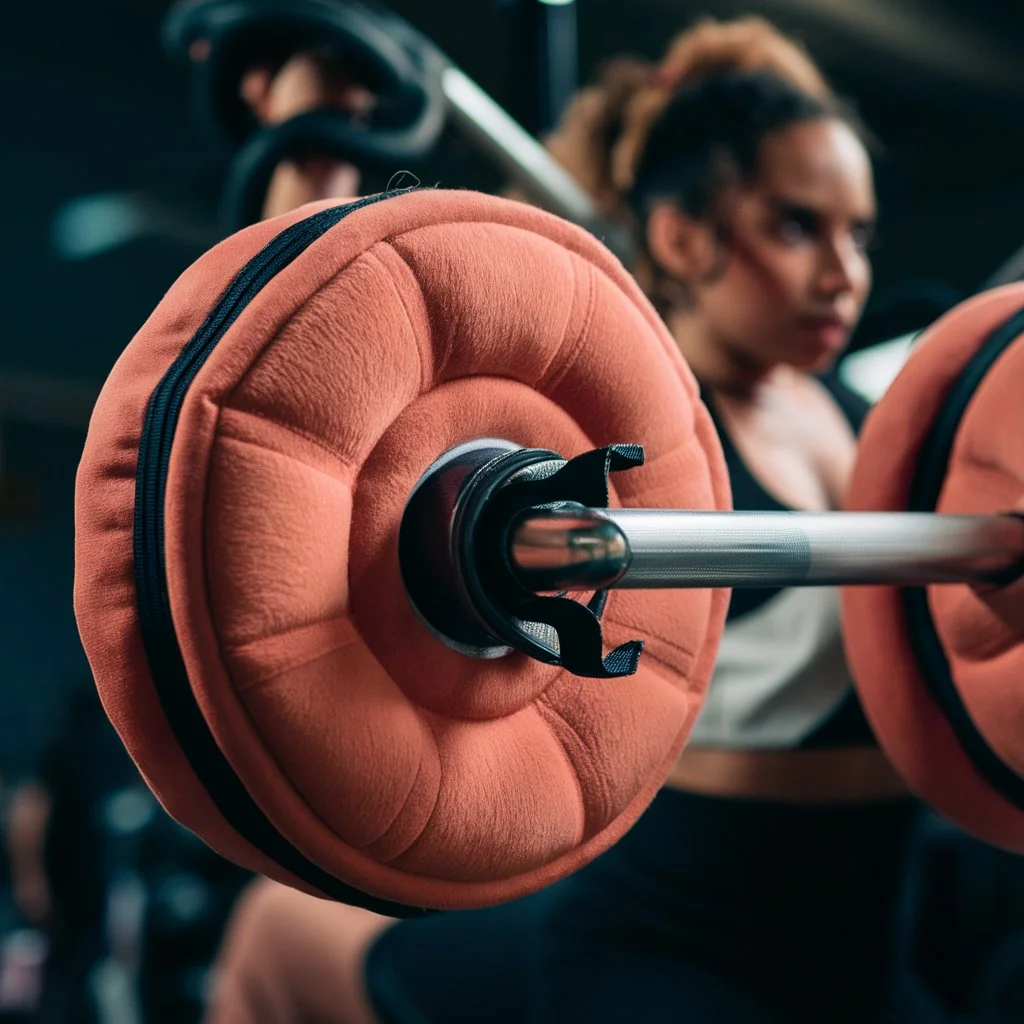
Sometimes, a cheap option can still give enough support and durability for your needs. Last, it’s about finding the best fit for your preferences and budget. Some may prefer to invest in higher-end options for extra features or durability. Others may find that a choice still meets their needs well. It’s all about understanding your needs and priorities. Then, you can make an informed choice. Also, with proper care and use, even cheap options can offer reliable support. They also last a long time.
User Feedback
Sure. Here’s a summary of user feedback on barbell pads. It’s based on reputable sources and customer reviews.
Common Pros
- Many users like the padding of the barbell pad. It reduces discomfort and pressure on the shoulders and neck. This happens during squats and hip thrusts.
- Users often mention that the pad helps prevent bruises and discomfort. The barbell resting on their bodies causes these. This is especially true for the neck and shoulders.
- Barbell pads are versatile. Users find them useful for exercises beyond squats. They include hip thrusts, lunges, and calf raises. These pads enhance workouts.
- People praise high-quality barbell pads for their durability. Users say they withstand heavy use without losing shape or cushioning.
Common Cons
- Some users have issues with the barbell pad slipping or rotating during exercises. This can be distracting and affect their form.
- The padding is nice for comfort. But, some users find certain barbell pads too thick. This can hurt stability and make the barbell feel less secure during lifts.
- Scent: Some users have reported a bad smell from certain barbell pads. This is a problem when they are new. This issue usually diminishes over time but can be off-putting first.
- Usually, users have issues with the fit of the barbell pad. They find it too loose or too tight for their barbell. This can affect its effectiveness and their comfort during workouts.
Reviews and Recommendations
For barbell pads, find one that gives comfort and durability. They will support your weightlifting. Here are some insights gathered from customer reviews and fitness communities:
- The ProSourceFit Barbell Pad is often praised for its comfy cushioning. It helps prevent discomfort during heavy squats and hip thrusts. Users appreciate its durability and how well it stays in place during workouts.
- The Iron Bull Strength Advanced Squat Pad has a reputation for its thick foam padding. This pad is great for heavy lifting. Many users report that it reduces pressure on the shoulders and hips. This makes it good for intense training. That’s great to hear! Barbell pads provide comfort and support for weightlifting. These are ideal for performing movements such as squats and hip thrusts. In these movements, the bar can rest on the shoulders or hips. Reducing pressure on these areas can make workouts more comfortable. It may also help prevent discomfort or injury. This allows users to focus more on their form and performance.
- Yes4All Barbell Squat Pad is affordable. Users like its ergonomic design and anti-slip surface. Users find it easy to attach and remove from the barbell. It provides enough cushioning for many exercises.
- RitFit Barbell Squat Pad: It has high-density foam. This gives the pad great support and durability. Users appreciate its versatility. They use it for squats, lunges, and hip thrusts. It can also hold heavy loads without losing shape.
- The Dark Iron Fitness Barbell Pad stands out for its sleek design. It also has extra-thick foam padding. Users praise its comfort and longevity. They note that it keeps its shape even after prolonged use.

